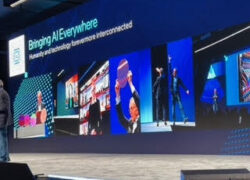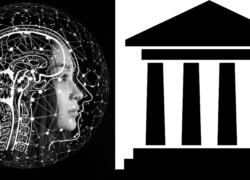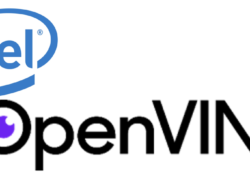Last month (April 17 and 18), I attended the O’Reilly AI Conference in New York City. The O’Reilly AI Conference continues to provide an informative and comprehensive overview of artificial intelligence and its accelerating transition from research to industrialization. Sessions covered a broad spectrum of AI topics, including cutting-edge research, open source tools, regulatory considerations, use cases and best practices for implementation. Over 2,000 people attended the conference. Some of the important details of the proceedings shown below.
Computational Propaganda
In his keynote “Computational Propaganda,” Sean Gourley (CEO, Primer) discussed how advances in AI capabilities can be used to manipulate public opinion and threaten democratic institutions.
Sean noted that the financial services industry is being dominated by algorithms because algorithms are faster than humans. Although these algorithms have brought dramatic improvements in market efficiencies, they have also led to unexpected events like the Flash Crash. This incongruity is summarized by Wiener’s Laws, which generally state that automation will routinely tidy up ordinary messes, but will occasionally create an extraordinary mess.
All these advances are leading to the advent of Computational Propaganda where the ability of machines to generate images and language that we can’t tell from reality makes it increasingly difficult to know what is real and what is fake. To emphasize his point, Sean walked through several real-world examples of increasingly sophisticated applications of social bots by state and nonstate actors, including Russia. He showed a video of President Obama making an incendiary speech which was totally fake yet very realistic. In conclusion, Sean states his belief that democracies will need to regulate the use of these technologies and will have to walk a fine line between censorship and freedom of speech.
AI Success Stories
Several keynotes highlighted successful, real-world implementations of ML and AI technologies. These presentations demonstrated the maturation of these powerful technologies while also showing that it takes considerable investment and engineering capabilities to make it a success.
INTUIT
Desiree Gosby (VP of Identify and Profile) discussed how Intuit’s TurboTax unit is using advanced text analytics and image recognition to automatically generate tax returns using mobile phone pictures of tax documents.
Her keynote highlighted both the ability of AI to create disruptive new services and the practical challenges and sophistication required to successful deploy AI into production, which often requires the ability to combine multiple, advanced techniques.
For example, it is difficult for consumers to take high-quality, easy-to-analyze images. Intuit had to deploy a variety of image techniques (edge detection and brightness/focus/ contrast detection) and Convolutional Neural Networks (CNN) models to provide feedback and get usable images. Next, they had to implement multiple techniques (document classification using CNN models and layout matching using Recurrent Neural Networks (RNN) models) to determine the type of tax form and manage the format variability of many forms. Finally, they had to extract the tax information using traditional optical character recognition coupled with natural language processing, entity recognition modeling and contextual random field modeling
NETFLIX
Tony Jebra (Director of Machine Learning) from Netflix discussed how his company uses ML to personalize its service for its 140 million subscribers. ML is deployed to optimize almost all the customer-facing experience, including ranking, page generation, promotion, image selection, search, messaging and marketing.
Tony demonstrated how Netflix uses contextual bandits, instead of batch machine learning, to interleave learning with data collection and to personalize content artwork for each subscriber. A separate ML system selects the content that should interest a subscriber. For each piece of content, Netflix has multiple artwork options that highlight unique elements of the content (genre, themes, actors, age, etc.). Subscriber information, including viewing history and country, is used to choose which artwork to display for a piece of content. As an example, Tony showed how artwork displayed for the Netflix show “Stranger Things” is personalized based on your interest in horror films, sci-fi films or teenage dramas.
MASTERCARD
During his keynote, Nick Curcuru (VP of Data Analytics and Cyber Security) discussed MasterCard’s growing investment in AI. Mastercard has 2.5 billion customers that process 74 billion transactions per year. As fraud threats have become more sophisticated, Mastercard is turning to AI to protect customer data. Mastercard uses AI to provide real- time credit intelligence using hundreds of data points, to provide passive biometric identification for additional security and in its anti-money laundering monitoring. As an example, Mastercard has used AI to increase the number of data points used in card charge authorization from 15 to over 150 in five years.
FACEBOOK
Kim Hazelwood (Senior Engineering Manager, AI Infrastructure) presented how Facebook uses AI and ML to create highly customized experiences for its 2.8B subscribers. Facebook deploys a variety of ML models across its services and features. Multilayer Perception models are used for search ranking, news feed ranking and advertisement displays. Support Vector Machines and CNN are used for automatic facial recognition and image tagging while RNN are used for language translation, speech recognition and content understanding. All these algorithms are deployed at a massive scale. Facebook does over 200 trillion predictions per day and does over 6 billion language translations per day.
Conclusion
Analytics, Artificial Intelligence (AI) and Machine Learning (ML) are profoundly transforming how businesses and governments engage with consumers and citizens. Across many industries, high value transformative use cases in personalized medicine, predictive maintenance, fraud detection, cybersecurity and more are rapidly emerging. The pace of innovation continues to accelerate. events like the O’Reilly AI Conference can provide analytics leaders with valuable insights and an understanding of the future.








